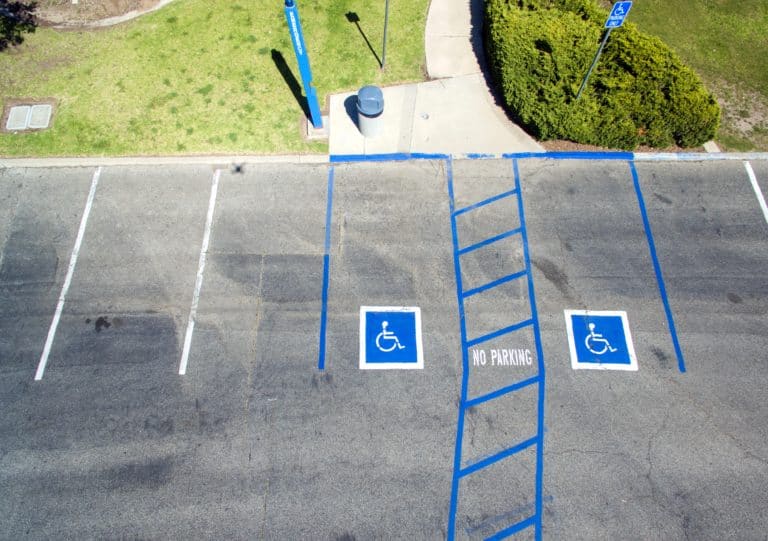Juliana Chang is a student at Harvard Law School and a member of the Labor and Employment Lab.
Imagine this: there’s a bill waiting on a vote from the Senate. In the House, the bill passed with strong bipartisan support. The same bill was voted out of the Senate Health, Education, Labor, and Pensions Committee months ago by another bipartisan vote of 19–2. Advocates for the bill say that if the Senate called the vote today, they would have enough votes to pass it.
But the Senate won’t do it.
At least, not for the Pregnant Workers Fairness Act.
The Pregnant Workers Fairness Act (PWFA) would provide relief to thousands of pregnant workers across the country who need accommodations. Under current law, pregnant workers have no right to accommodations, except in instances of discrimination or serious medical conditions. As a result, thousands of pregnant workers, predominantly working-class women of color, are forced out of their jobs, even though they want to continue working.
If enacted into law, the PWFA would improve the lives of thousands of people across the country, but the Senate refuses to call a vote on it. In a time of overwhelming political polarization, where most laws are created through razor-thin margins in Congress, it’s difficult to understand why the Senate won’t move on a bill that is widely supported across partisan lines.
Whatever the reason may be, it’s clear that the PWFA should be passed. This article takes a closer look at how existing laws don’t adequately protect workers, and how the PWFA would change things for the better.
Existing laws don’t do enough to protect pregnant workers
Like other kinds of workplace accommodations, pregnancy accommodations allow workers to continue doing their jobs without risking their health or their economic security. Common examples of accommodations include giving a cashier a chair to sit in during their shift, allowing a retail worker to carry a water bottle, or helping a tech worker work from home.
Despite their importance, pregnancy accommodations are hard to come by under existing federal law. The two main pathways, through the Americans with Disabilities Act (ADA), and through the Pregnancy Discrimination Act (PDA), impose strict burdens on workers.
The ADA grants workers with disabilities the right to reasonable accommodations at work. However, pregnancy itself is not considered a disability under the ADA, so pregnant workers who want accommodations need to demonstrate an abnormal pregnancy complication or medical condition that warrants ADA coverage. Given the abnormality requirement, many courts have held that debilitating, but common, pregnancy conditions like preeclampsia, hyperemesis gravidarum (severe morning sickness), and even pregnancy-related bleeding, don’t count as qualifying disabilities under the ADA. For example, in Annobil v. Worcester Skilled Care Center, Inc., the plaintiff stated that she suffered from headaches, nausea, vomiting, and even preeclampsia during her pregnancy. Yet the court found that she did not have an ADA-qualifying disability, because she did not explain how “such symptoms differ from normal symptoms of pregnancy and how these complications are disabling.” The abnormal-complication requirement also means that pregnant workers seeking accommodations to help avoid pregnancy complications would be unable to do so. Ultimately, many pregnant workers in need of accommodations cannot access them under the ADA.
Pregnant workers can also try to obtain accommodations by pursuing a sex discrimination claim under the Pregnancy Discrimination Act. Under the PDA, pregnant workers are entitled to accommodations if other non-pregnant workers, such as injured workers, are being given those accommodations. This requirement for a comparator is a huge hurdle. If accommodations are available only when they’re already being given to other workers, an employer could entirely avoid the issue by just not giving anyone accommodations. If a pregnant worker is the only person in their job position, then there simply may be no way to demonstrate pregnancy discrimination.
Courts have been strict about the need for a comparative worker, and strict about who qualifies. A comparator needs to be non-pregnant, in the same position as the pregnant worker, be similar in their ability to work, and have been accommodated in the way the pregnant worker wants to be accommodated to qualify. According to one report from work-family nonprofit A Better Balance, two-thirds of recent pregnancy accommodation cases failed under the Pregnancy Discrimination Act for lack of an acceptable comparator. For example, in Adduci v. Fed. Express Corp., a pregnant FedEx worker requested a temporary work reassignment after her doctor gave her a 25-pound lifting restriction. Even though the pregnant worker identified hundreds of other employees with her job title who were accommodated with similarly temporary reassignments, the court found that they could not count as comparators, since it was unclear how their ability or inability to work compared to the plaintiff’s.
The Pregnant Workers Fairness Act would change things for the better
Many of the limitations on the PDA and ADA were judicially created through narrow readings of the statutes. While the PWFA cannot completely eliminate the possibility of judicially-created limitations, it removes two of the major considerations under which courts rejected pregnant accommodation cases: the comparator requirement under the PDA, and the abnormal condition requirement under the ADA.
Under the PWFA, pregnant workers would no longer have to prove sex discrimination or demonstrate an ADA-qualifying medical condition to secure accommodations. Instead, they would have a right to reasonable accommodations on the basis of their pregnancy. A reasonable accommodation right means that if a pregnant worker requests accommodations, then their employer is legally obligated to either grant the accommodation, offer alternative accommodations, or explain why it would not be possible for them to accommodate the worker. The employer will no longer be able to just decline or ignore the request. This change will simplify and streamline the process for pregnant workers who need workplace modifications to get their jobs done.
On top of solving an urgent issue, the design of the Pregnant Workers Fairness Act would also address many of the critiques of the PDA and ADA. For example, the PDA often has been criticized for being gender-exclusive, since it frames pregnancy discrimination as a form of sex discrimination against women. The PWFA would expand entitlement to workplace protections to all who can get pregnant, not just cisgender women. Similarly, the question of whether to frame pregnancy as a disability by including it under the ADA is also hotly debated. The PWFA would bypass this debate and guarantee pregnant workers accommodations on the basis of their pregnancy, not on the pregnancy’s relationship to impairing or disabling the worker.
In sum, the evidence pointing to the need for the PWFA is extensive. An affirmative right to pregnancy accommodations benefits us all, while also solving an issue that disproportionately impacts low-wage workers and women of color. To pass the PWFA is to support health and safety for all, and to support economic justice. It might be unclear why the Senate has not yet acted, but it’s obvious that they should.









Daily News & Commentary
Start your day with our roundup of the latest labor developments. See all
July 4
The DOL scraps a Biden-era proposed rule to end subminimum wages for disabled workers; millions will lose access to Medicaid and SNAP due to new proof of work requirements; and states step up in the noncompete policy space.
July 3
California compromises with unions on housing; 11th Circuit rules against transgender teacher; Harvard removes hundreds from grad student union.
July 2
Block, Nanda, and Nayak argue that the NLRA is under attack, harming democracy; the EEOC files a motion to dismiss a lawsuit brought by former EEOC Commissioner Jocelyn Samuels; and SEIU Local 1000 strikes an agreement with the State of California to delay the state's return-to-office executive order for state workers.
July 1
In today’s news and commentary, the Department of Labor proposes to roll back minimum wage and overtime protections for home care workers, a federal judge dismissed a lawsuit by public defenders over a union’s Gaza statements, and Philadelphia’s largest municipal union is on strike for first time in nearly 40 years. On Monday, the U.S. […]
June 30
Antidiscrimination scholars question McDonnell Douglas, George Washington University Hospital bargained in bad faith, and NY regulators defend LPA dispensary law.
June 29
In today’s news and commentary, Trump v. CASA restricts nationwide injunctions, a preliminary injunction continues to stop DOL from shutting down Job Corps, and the minimum wage is set to rise in multiple cities and states. On Friday, the Supreme Court held in Trump v. CASA that universal injunctions “likely exceed the equitable authority that […]